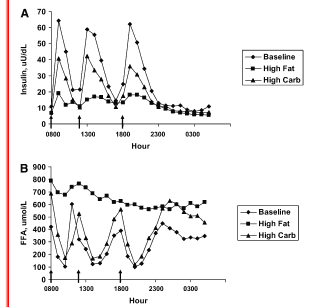Resistant Starch & Butyrate: Eades' Shmashthematics

While finally finishing off my last post on short chain "fatty" acids, I was reminded of a whopper of a post on Dr. Eades' blog that I came across a long ago on resistant starch and butyrate. This post, too, has been in my Drafts for a very long time waiting for some finishing touches. I came across this whilst I was looking into soluble fiber, low carbing and stalling and discovered that for all intent and purposes, SCFA's are carbohydrates metabolically, not fats at all. On LC forums I was repeatedly told or reading that soluble fiber is not really a carb because it is converted to a fat therefore doesn't stimulate insulin (I've got a fair amount of info on this to summarize in a future post). So this was one of the first things I began inquiring after. I had read several highly informative pieces by Eades through links in discussions, etc. But when I found and read this one, it perked my "fact check" bunny ears right on up. He seem





